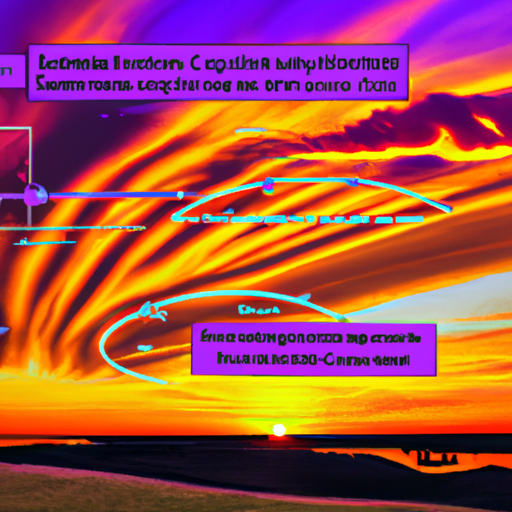A natural wonder that captivates the heart and mind, sun dogs are a spectacle everyone should experience at least once. But what exactly causes these beautiful halos of light to appear in the sky? This comprehensive guide will delve into the science behind sun dogs, the conditions necessary for their formation, and the cultural significance attached to these ethereal phenomena.
What Are Sun Dogs?
Sun dogs, also known as parhelia, are luminous spots that often appear on either side of the sun, typically when it’s low on the horizon. They’re a part of a larger optical phenomenon known as a 22° halo, so named for the radius of the circle that the halo forms around the sun.
- Sun dogs are created by the refraction, or bending, of sunlight by ice crystals in the atmosphere.
- These ice crystals act like tiny prisms, bending the light rays passing through them with a minimum deflection of 22°.
- If the crystals are oriented vertically, a bright spot of light will be visible to the observer on the ground.
The Role of Atmospheric Conditions
Certain atmospheric conditions are more conducive to the formation of sun dogs. Here’s a quick rundown:
- Cold Weather: Sun dogs are more likely to occur when the weather is cold, as this encourages the formation of ice crystals in the atmosphere.
- Cirrus Clouds: These high-altitude clouds are made up of tiny ice crystals – the key ingredient for sun dog formation.
- Low Sun: Sun dogs typically occur when the sun is low on the horizon, such as during sunrise or sunset.
Cultural Significance of Sun Dogs
Throughout history, sun dogs have been viewed with awe and wonder. Different cultures have associated them with various myths and beliefs:
- In Norse mythology, sun dogs were seen as harbingers of the arrival of the wolf Skoll, who would eventually devour the sun.
- Native American tribes, such as the Dakota Sioux, considered sun dogs to be a symbol of the universe’s duality and balance.
How to Spot a Sun Dog
As a caregiver, you can turn the search for sun dogs into a fun, educational activity with your loved ones. Here’s how:
- Pick the Right Time: Look for sun dogs when the sun is low in the sky, typically around sunrise or sunset.
- Look for Cirrus Clouds: These thin, wispy clouds are a sign that ice crystals are present in the atmosphere.
- Look Around the Sun: Sun dogs appear as bright spots about 22° to the left and right of the sun.
Frequently Asked Questions
Q: Can you see sun dogs at any time of the year?
A: Yes, sun dogs can occur at any time of the year, as long as the atmospheric and weather conditions are right.
Q: Are sun dogs common?
A: While not a daily occurrence, sun dogs are fairly common. They’re most noticeable when the sun is low.
Q: Can sun dogs appear at night?
A: No, sun dogs are a solar optical phenomenon and therefore only appear when the sun is present.
Q: What’s the difference between sun dogs and rainbows?
A: Both are optical phenomena caused by light refraction. However, sun dogs are caused by ice crystals, while rainbows are caused by rain droplets.
Remember, the natural world is full of wonders just waiting to be discovered. Keep looking up, and you’ll continue to be amazed by the beauty found in the sky above.



